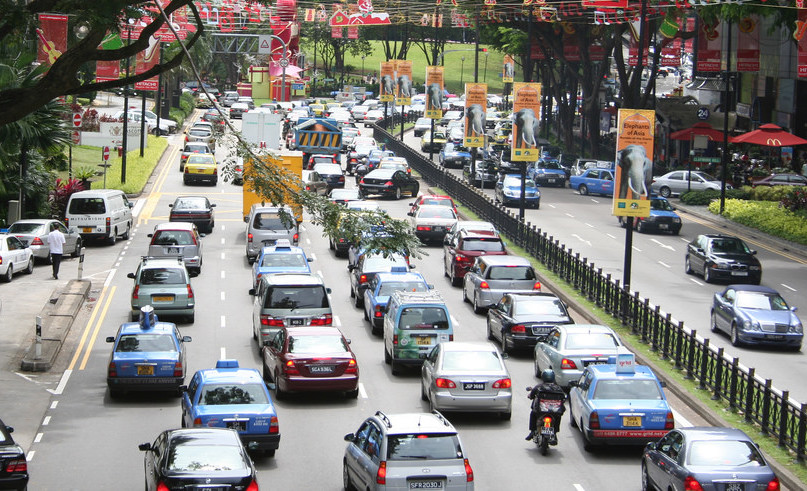Sure, Singapore always had the reputation of banning unsavory things like chewing gum, porn, and free speech (hur hur), but the nation will soon add cars to the list of prohibited items. Yes, cars.
Come February next year, the city-state will no longer allow any new vehicles into the country, citing land shortage and overcrowded roads. The Land Transport Authority (LTA) is adopting a strict zero growth approach for all private passenger cars and motorcycles.
What this means is that the number of vehicles in the country will be frozen — new cars can enter circulation, so long as old ones are scrapped, for example.
“In view of Singapore’s land constraints and our commitment to continually improve our public transport system, we will lower the vehicle growth rate from the current 0.25% per annum to 0% with effect from February 2018 for COE Categories A, B and D,” LTA wrote in a press release. A whopping 12 percent of the whole country’s land area is taken up by roads, it added.
As it is, Singapore is considered one of the most insanely expensive places to purchase and use cars, with high taxes and fees implemented in a bid to limit traffic congestion and pollution.
Category C vehicles — goods vehicles and buses — will still be allowed until 2021 to provide businesses more time to adjust their logistics operations and reduce the number of their motor fleet.
The zero growth approach for vehicles is bolstered by continued investment in Singapore’s public transit projects. According to the LTA, the government will be investing $20 billion in new rail infrastructure, another $4 billion to renew, upgrade, and expand rail operating assets, and yet another $4 billion in bus contracting subsidies.
And perhaps more money is direly needed to improve the state of public transport these days. After all, if train services stop breaking down on the reg, Singaporeans would actually be inclined to rely less on getting around in private vehicles.
The vehicle growth rate will be reviewed again in 2020.




